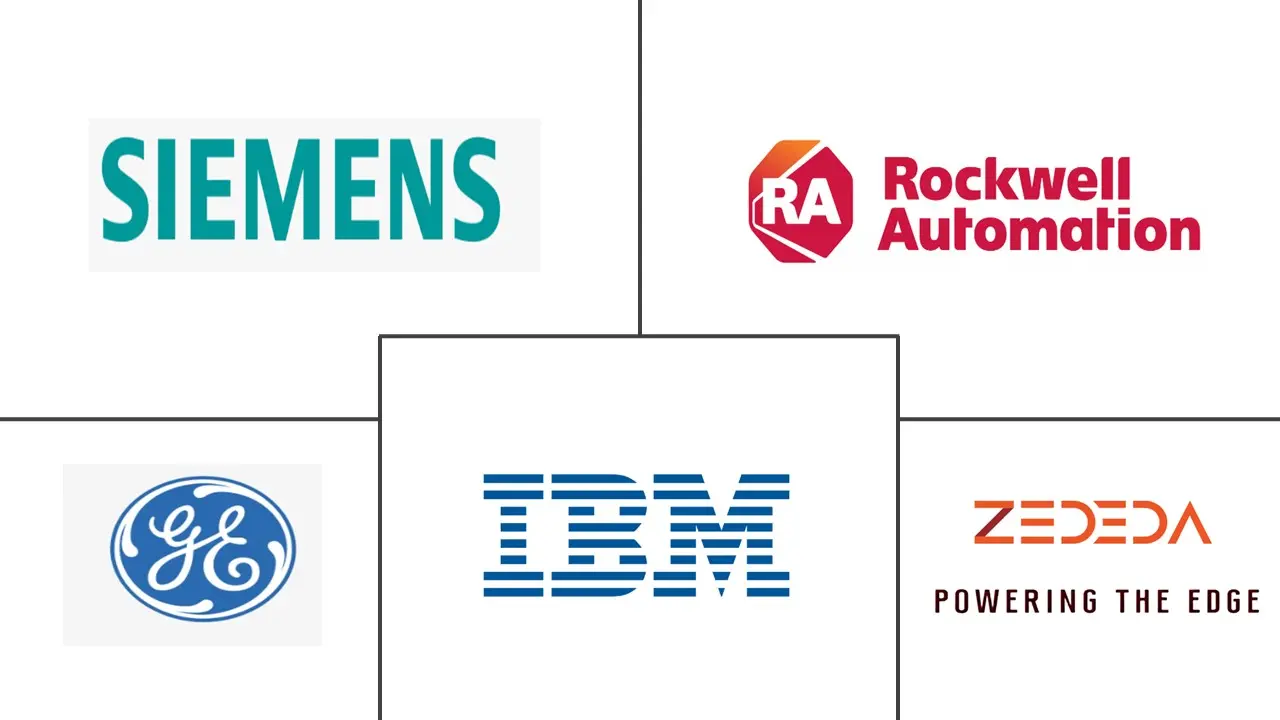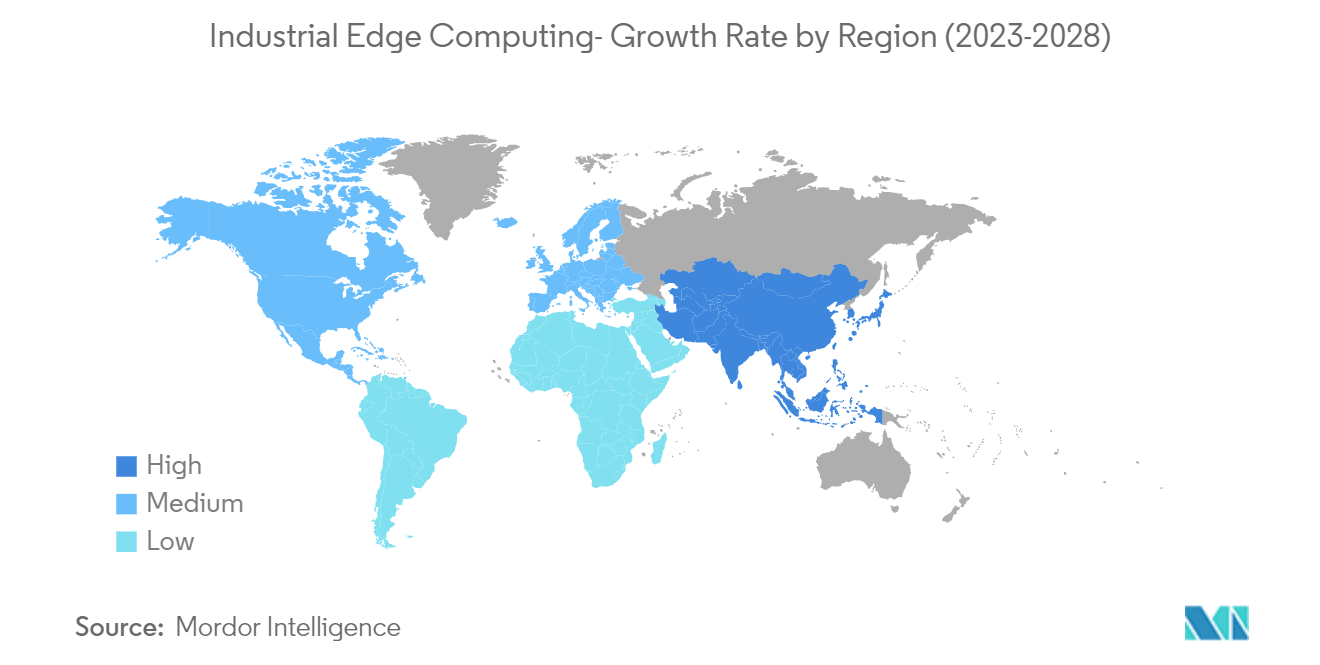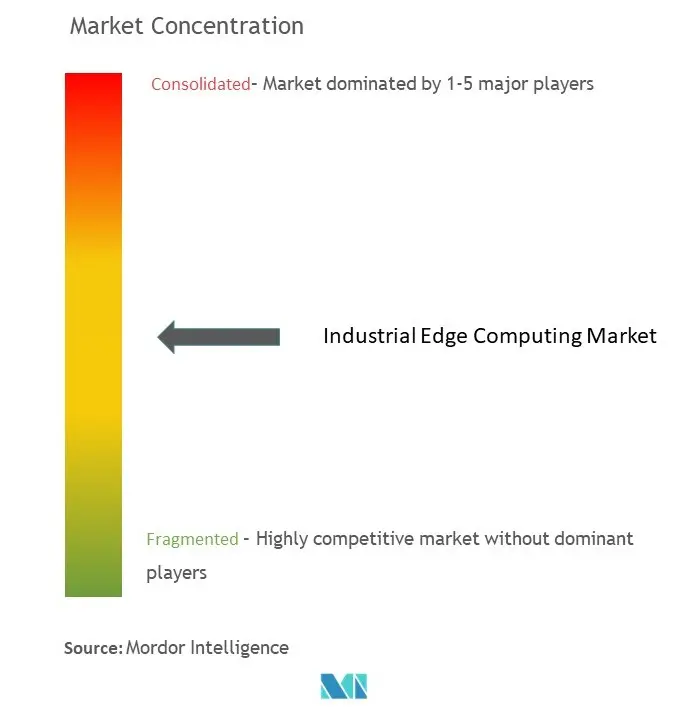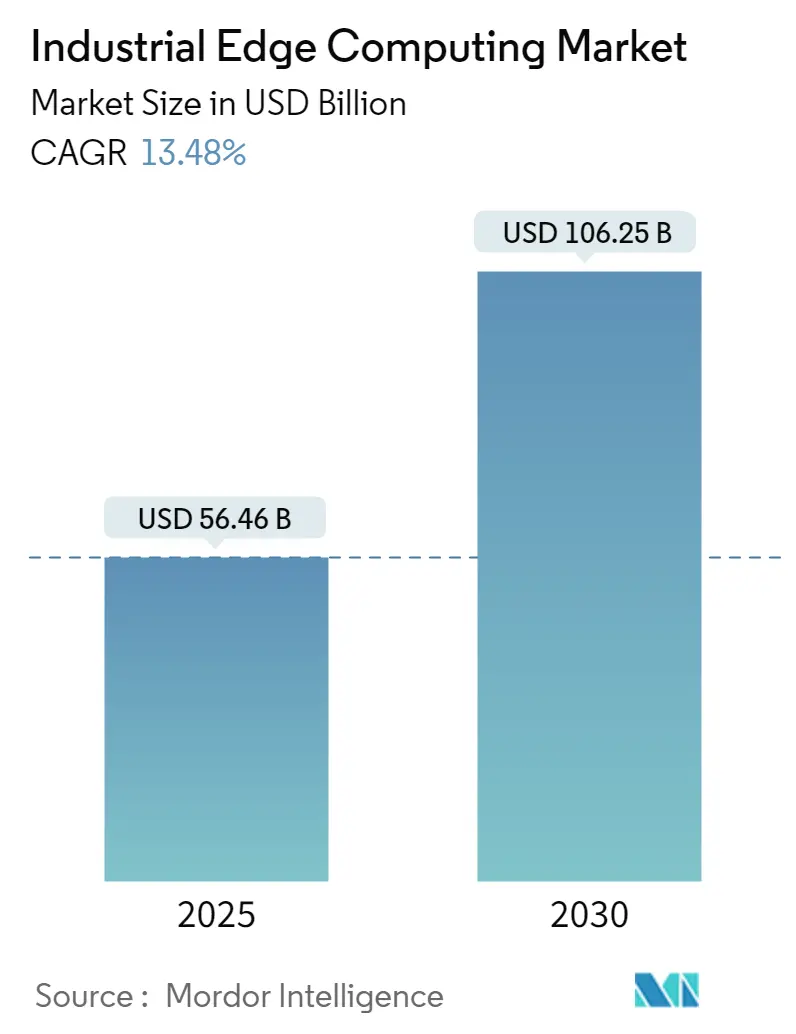
Industrial Edge Computing Market Analysis
The Industrial Edge Computing Market size is estimated at USD 56.46 billion in 2025, and is expected to reach USD 106.25 billion by 2030, at a CAGR of 13.48% during the forecast period (2025-2030).
The need for edge computing is growing among businesses because they understand the tremendous potential of edge computing in transforming the manufacturing industry. Edge computing enables organizations to leverage the power of IT and OT convergence, real-time data processing, and advanced analytics to drive efficiencies, reduce costs, and improve business outcomes in manufacturing.
- The increasing trend of factory automation, usage of IoTs, and the application of connected devices across various end-user industries such as automobile and logistics are creating a demand for the market.
- The industrial edge allows organizations to conserve network bandwidth by reducing the data sent to the cloud. Organizations can also minimize cloud computing and storage costs by processing data locally. When computing and storage are decentralized, there's less risk that data will be compromised or a cyberattack will take down the entire network.
- The industrial edge also combines IT with operational technology (OT), allowing complex data analysis and significant operation improvements. Real-time, event-driven interactions between OT and business systems help maximize industrial automation's value.
- Industrial edge computing also provides cost-reduction benefits. Transferring large data sets of temporary or unimportant data to a centralized cloud is cost-prohibitive, so keeping such data at the edge and discarding it after use lowers the cost. Edge computing also makes tracking individual devices or equipment implementation on a shop floor easy. This data will assist the manufacturer in optimizing equipment performance while decreasing costs and hazardous circumstances.
- Few organizations can afford to establish redundant high-end servers, storage, and networking equipment in remote locations. Instead, they may install required applications on commodity servers that don't have redundant components (such as power supplies and hard drives). Worse still, edge locations may not contain a server room or other environmentally controlled space for IT equipment. The lack of adequate power, redundancy, cooling, or ventilation can be a challenge for the industry.
Industrial Edge Computing Market Trends
Oil and Gas sector is expected to grow at a higher pace
- The current uncertainty around the global market for oil and natural gas has boosted the highly competitive nature of the oil and gas industry. This has pressured companies to reduce their operating costs and capital expenditures. Also, the industry is transforming digitally due to the rise of technologies such as edge computing and the Internet of Things (IoT).
- The industry needs to catch up to other sectors, such as manufacturing when it comes to digitalization and automation, so the potential for IoT to be transformative remains to be explored. Companies must leverage this change to increase their productivity and cut costs, enabling them to stay competitive in today's market.
- As oil and gas prices remain volatile, companies are looking to companies like ZEDEDA, the leader in edge infrastructure orchestration, to leverage the power of data and increased mechanization to optimize processes and gain a competitive edge. Pulling convenient actionable insights from edge conditions like oil rigs, wells, and refineries can save millions by reducing equipment failure and safety issues and maintaining regulatory compliance. These conditions, however, can be very remote and may have limited on-site staff, so managing these challenges requires tools designed to simplify handling and securing edge infrastructure.
- Edge computing introduces cost savings by lowering the network bandwidth and reducing data center costs. Minimizing unplanned downtime through edge computing can also lead to significant payoffs. An MIT Sloan study found that a single day of downtime for a liquefied natural gas (LNG) facility can cost USD 25 million, with a typical midsize LNG facility going down about five times a year. Edge computing prevents costly shutdowns by reducing the processing burden on IT infrastructure.
- Offshore oil and gas structures produce an extraordinary amount of data daily. According to a Cisco report, an oil rig can create two terabytes of data daily. Still, due to the remote area of the offshore oil and gas industry, this data is only examined and leveraged for decision-making with support from edge computing resolutions.
- A recent blog from Schneider Electric underscores the significance of latency reduction as a compelling factor driving offshore organizations to adopt edge platforms. Zero-touch edge computing facilitates real-time data organization, enhancing communication, storage, and analysis capabilities. This, in turn, contributes to more informed and timely business-critical decision-making.
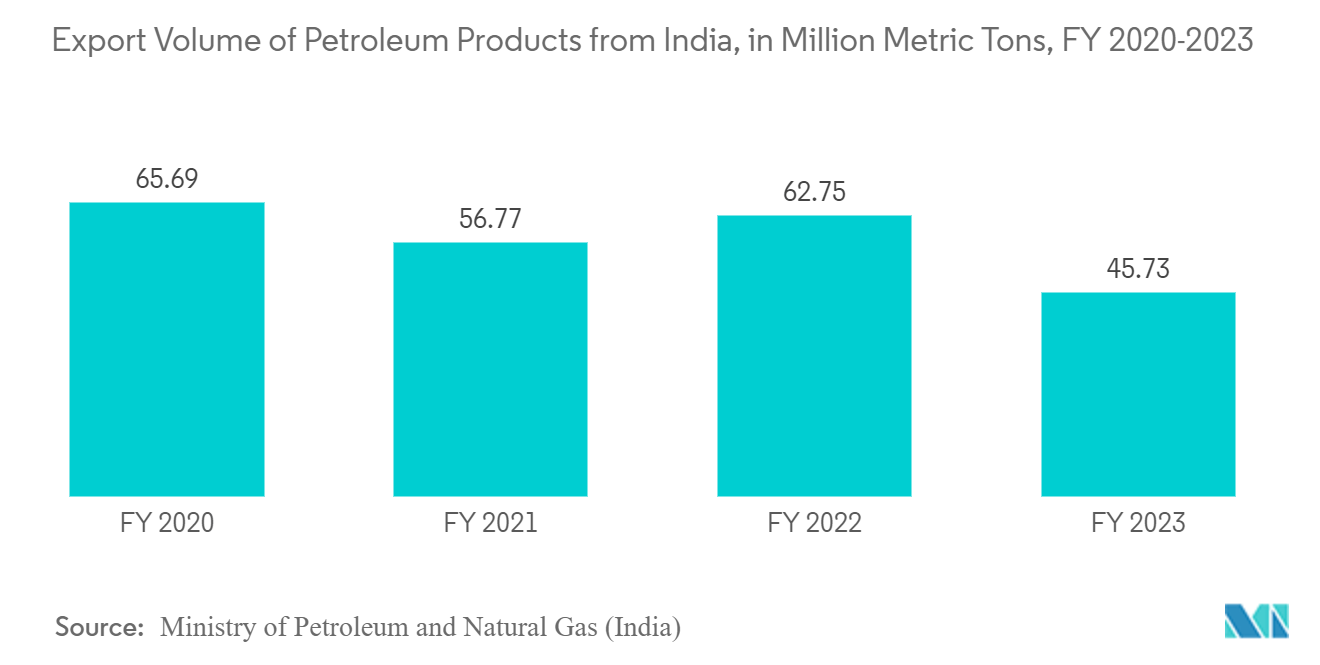
Asia- Pacific is anticipated to hold the significant share
- Asia's top emerging markets encompass India, China, the Philippines, Indonesia, and Vietnam. Additionally, countries like Malaysia, Singapore, and Thailand are attracting significant attention. These economies are undergoing substantial growth in their consumer classes, rapid technological adoption, and digital transformation. For instance, the Philippines is experiencing a 30% annual growth in its Internet economy through 2025. India is projected to have 1 billion smartphone users by 2026, and Google predicts that Vietnam will be one of the fastest-growing Internet economies in the next decade.
- However, as more individuals across Asia's emerging markets simultaneously connect and access digital services, there is a growing strain on local networks. Public internet congestion has become a top concern for companies in emerging Asia, resulting in issues such as latency and jitter, which can adversely affect user experiences. In an era where consumers increasingly expect reliable and fast digital services anytime, anywhere, businesses failing to meet these expectations risk impacting their bottom line.
- Furthermore, increased government funding to enhance digitization and the growing demand for businesses to process and store data contribute to market growth. The rise of emerging IoT applications in smart cities generates vast amounts of data. The increasing need for cost-effective data analysis and processing near the data source has led to the adoption of cloud computing, driving segment growth.
- The development of multi-cloud platforms in Asia has spurred the growth of a high-skilled workforce in computer engineering. Businesses focused on digital tools and techniques, as well as technology-based collaboration between countries like Singapore and India in areas such as digital health, smart cities, and IT-based infrastructure, are examples of how edge computing is gaining traction in Asian enterprises. By using edge computing platforms, Asian organizations can alleviate infrastructure bottlenecks caused by the surge in consumers. Notably, Singapore's multi-cloud platform serves as a benchmark for its benefits to business organizations.
- For instance, in September 2022, Bharti Airtel and IBM partnered to deploy Airtel's edge computing platform. This initiative enables large enterprises across various industries, including automotive and manufacturing, to accelerate innovative solutions. Maruti Suzuki, India's largest carmaker, plans to use the edge platform to enhance efficiency and accuracy in quality inspections on the factory floor. By establishing this platform, Maruti Suzuki expects to improve quality control and ensure data security at the edge.
- Nife, as an organization, assists enterprises in building future business models that offer robust digital experiences with an added layer of security. Models based on edge computing platforms are rapidly scalable and possess a global scaling factor, which can result in cost savings when expanding into new offshore markets. These factors are significantly benefiting local edge computing enterprises, allowing them to compete effectively in multi-cloud services on a global scale.
- In response to increasing demand, companies often implement automation strategies to maintain high efficiency in their production environments. Consequently, compared to all three oil and gas streams, automation penetration is relatively high in the downstream sector.
Industrial Edge Computing Industry Overview
Its Semi-Consolidated characterize the industrial edge computing market. Currently, key players dominating the market include Siemens, ZEDEDA, General Electric Company, and Rockwell Automation, among others. Companies like General Electric (GE), renowned for their expertise in delivering edge computing solutions across various industries, including aerospace and manufacturing, hold substantial market positions. These vendors employ key competitive strategies, such as acquisitions, partnerships with industry players, and the introduction of new products and services. Notable recent developments in the market include:
In November 2022, Rockwell Automation announced the development of an orchestration and intelligent edge management platform coupled with an edge application ecosystem. This initiative is based on open industry standards and zero trust security principles, aimed at accelerating the digital transformation journey for industrial customers. As industrial manufacturers increasingly embrace digital change, the company seeks to amplify digital transformation efforts through innovations in analytics, artificial intelligence (AI), Manufacturing Execution Systems (MES), and other technologies. This approach allows them to access real-time intelligence closer to the source of industrial data.
In August 2023, ABB made a strategic investment by partnering with Pratexo, a company specializing in edge-to-cloud acceleration platforms. This collaboration empowers ABB's customers to deploy edge-based networks and solution architectures that provide real-time insights. Importantly, it offers enhanced data privacy and security, reduces the volume of data transferred to the cloud, and enables operations even when disconnected from the internet. This strategic partnership represents a significant step in advancing edge computing solutions within the industrial sector.
Industrial Edge Computing Market Leaders
-
IBM Corporation
-
Siemens
-
General Electric Company
-
Rockwell Automation
-
ZEDEDA
- *Disclaimer: Major Players sorted in no particular order
Industrial Edge Computing Market News
- April 2024 - Machine Inc. and Siemens AG announced a partnership bringing manufacturing AI to on-premises automation networks. Sight Machine’s Manufacturing Data Platform is an end-to-end software system for collecting, contextualizing, and analyzing all types of manufacturing data to improve production. It enables manufacturers to unlock the power of industrial data to increase profitability, productivity, and sustainability. Siemens Industrial Edge is an edge computing platform consisting of applications, OT and IT connectivity, devices, and a central management system.
- October 2023 - Rockwell Automation introduces a new family of edge computing modules, ready for Allen-Bradley control networks and Industry 4.0 control innovation and these are microcontrollers that have access to the ControlLogix backplane, allowing programmers to collect and analyze data on the machine instead of using protocols that must exchange data with far-off servers on extended networks.
Industrial Edge Computing Industry Segmentation
Industrial edge computing (IEC) is a subset of edge computing that uses high-speed data analytics within a localized, on-site system to help address all types of industrial manufacturing challenges.
The industrial edge computing market is segmented by component (hardware, software, and services), end user (manufacturing, oil and gas, mining), and geography (North America, Europe, Asia Pacific, Latin America, and Middle East & Africa).
The market sizes and forecasts are provided in terms of value USD for all the above segments.
| By Component | Hardware |
| Software | |
| Services | |
| By End-user Vertical | Manufacturing |
| Oil and Gas | |
| Mining | |
| By Geography*** | North America |
| Europe | |
| Asia | |
| Australia and New Zealand | |
| Latin America | |
| Middle East and Africa |
Industrial Edge Computing Market Research Faqs
How big is the Industrial Edge Computing Market?
The Industrial Edge Computing Market size is expected to reach USD 56.46 billion in 2025 and grow at a CAGR of 13.48% to reach USD 106.25 billion by 2030.
What is the current Industrial Edge Computing Market size?
In 2025, the Industrial Edge Computing Market size is expected to reach USD 56.46 billion.
Who are the key players in Industrial Edge Computing Market?
IBM Corporation, Siemens, General Electric Company, Rockwell Automation and ZEDEDA are the major companies operating in the Industrial Edge Computing Market.
Which is the fastest growing region in Industrial Edge Computing Market?
Asia Pacific is estimated to grow at the highest CAGR over the forecast period (2025-2030).
Which region has the biggest share in Industrial Edge Computing Market?
In 2025, the North America accounts for the largest market share in Industrial Edge Computing Market.
What years does this Industrial Edge Computing Market cover, and what was the market size in 2024?
In 2024, the Industrial Edge Computing Market size was estimated at USD 48.85 billion. The report covers the Industrial Edge Computing Market historical market size for years: 2019, 2020, 2021, 2022, 2023 and 2024. The report also forecasts the Industrial Edge Computing Market size for years: 2025, 2026, 2027, 2028, 2029 and 2030.
Our Best Selling Reports
Industrial Edge Computing Industry Report
Statistics for the 2025 Industrial Edge Computing market share, size and revenue growth rate, created by Mordor Intelligence™ Industry Reports. Industrial Edge Computing analysis includes a market forecast outlook for 2025 to 2030 and historical overview. Get a sample of this industry analysis as a free report PDF download.

